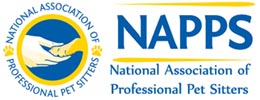Leptospirosis is a bacterial disease that can be transmitted from one animal to another animal or human. Dogs typically become infected when they come into contact with wet grass, soil, puddles, streams or ponds contaminated with the urine of infected animals. The bacteria can enter through a cut in the skin or mucous membranes, such as the eye, nose or mouth.
Here is some additional information recently shared by our friends at North Penn Animal Hospital to help learn more, and to serve as an excellent reminder to be sure to vaccinate your pups!
____________________________________________________________________________________________________
MAR 31, 2017
Leptospirosis

You have probably seen the recent news stories about leptospirosis. Some of what you have learned may be misleading or even inaccurate. We want to make sure you have the best information in order to help keep your dog as healthy as possible.
Leptospirosis is a bacterial infection that is usually transmitted through the urine of an infected animal. Dogs can contract the bacteria without actually coming in contact with the infected animal.
“Leptospirosis does not discriminate among breeds of dogs. It is no longer a disease of only large working dogs. Breeds such as miniature schnauzers, terriers and poodles are at risk, too.”
The leptospirosis bacteria is zoonotic, meaning that it can be transmitted to humans and other animals. For more information on leptospirosis, read more here
Common risk factors for leptospirosis in dogs residing in the United States include roaming on rural properties, exposure to wild animals or farm animals, exposure to or drinking from rivers, lakes or streams (because of exposure to potentially infected wildlife, farm animals, or water sources) even if in the backyard, visiting dog parks or kennels; and contact with rodents or other dogs.
“Because leptospirosis carriers reside in many locations, dogs living in urban, suburban and rural areas can be at risk”.
Wildlife and domestic animals commonly infected with leptospirosis include:
|
|
|
Reducing your dog’s exposure to possible sources of the Leptospira bacteria can reduce its chances of infection. For more information on transmission, read more here
Signs of illness can vary:
diminished appetite
vomiting
abdominal pain
increased drinking and urinating
diarrhea
This list is just a few of the symptoms you may observe. If you think your dog may be infected, call us. There are also precautions you will want to take for yourself and your family. Read more here
You can protect your dog by vaccinating. You know the saying, “Prevention is the best medicine” and it holds true here. Vaccines effectively prevent leptospirosis and protect dogs for at least 12 months. Annual vaccination is recommended for at-risk dogs. For more information about prevention, read more here.




Leave a Reply